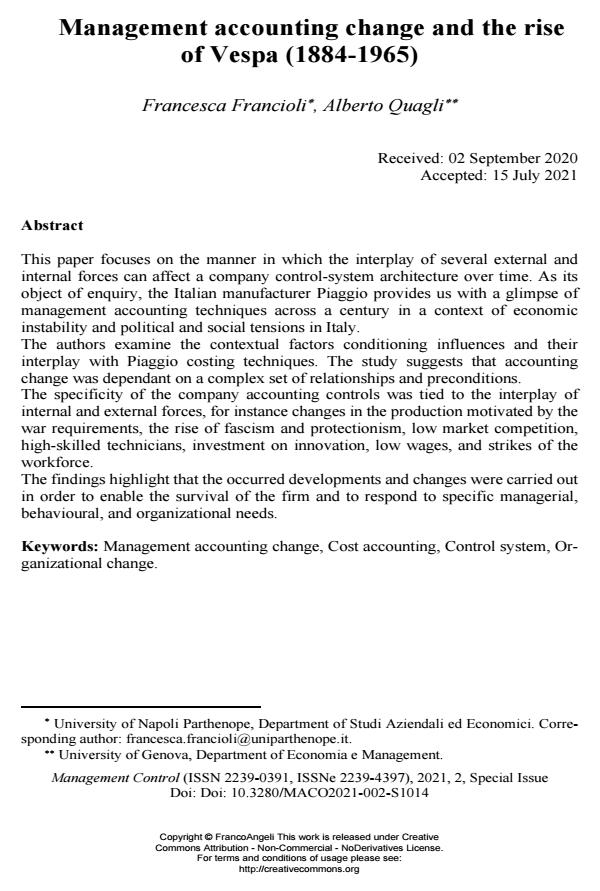Management accounting change and the rise of Vespa (1884-1965)
Titolo Rivista MANAGEMENT CONTROL
Autori/Curatori Francesca Francioli, Alberto Quagli
Anno di pubblicazione 2021 Fascicolo 2021/suppl. 2
Lingua Inglese Numero pagine 26 P. 313-338 Dimensione file 276 KB
DOI 10.3280/MACO2021-002-S1014
Il DOI è il codice a barre della proprietà intellettuale: per saperne di più
clicca qui

FrancoAngeli è membro della Publishers International Linking Association, Inc (PILA)associazione indipendente e non profit per facilitare (attraverso i servizi tecnologici implementati da CrossRef.org) l’accesso degli studiosi ai contenuti digitali nelle pubblicazioni professionali e scientifiche
This paper focuses on the manner in which the interplay of several external and internal forces can affect a company control-system architecture over time. As its object of enquiry, the Italian manufacturer Piaggio provides us with a glimpse of management accounting techniques across a century in a context of economic instability and political and social tensions in Italy. The authors examine the contextual factors conditioning influences and their interplay with Piaggio costing techniques. The study suggests that accounting change was dependant on a complex set of relationships and preconditions. The specificity of the company accounting controls was tied to the interplay of internal and external forces, for instance changes in the production motivated by the war requirements, the rise of fascism and protectionism, low market competition, high-skilled technicians, investment on innovation, low wages, and strikes of the workforce. The findings highlight that the occurred developments and changes were carried out in order to enable the survival of the firm and to respond to specific managerial, behavioural, and organizational needs.
Parole chiave:Management accounting change, Cost accounting, Control system, Organizational change.
- The introduction of management control to recover small residential care homes and trigger managerialisation: Evidence from Italy Francesca Francioli, Massimo Albanese, in MECOSAN 129/2025 pp.41
DOI: 10.3280/mesa2024-129oa18723
Francesca Francioli, Alberto Quagli, Management accounting change and the rise of Vespa (1884-1965) in "MANAGEMENT CONTROL" suppl. 2/2021, pp 313-338, DOI: 10.3280/MACO2021-002-S1014